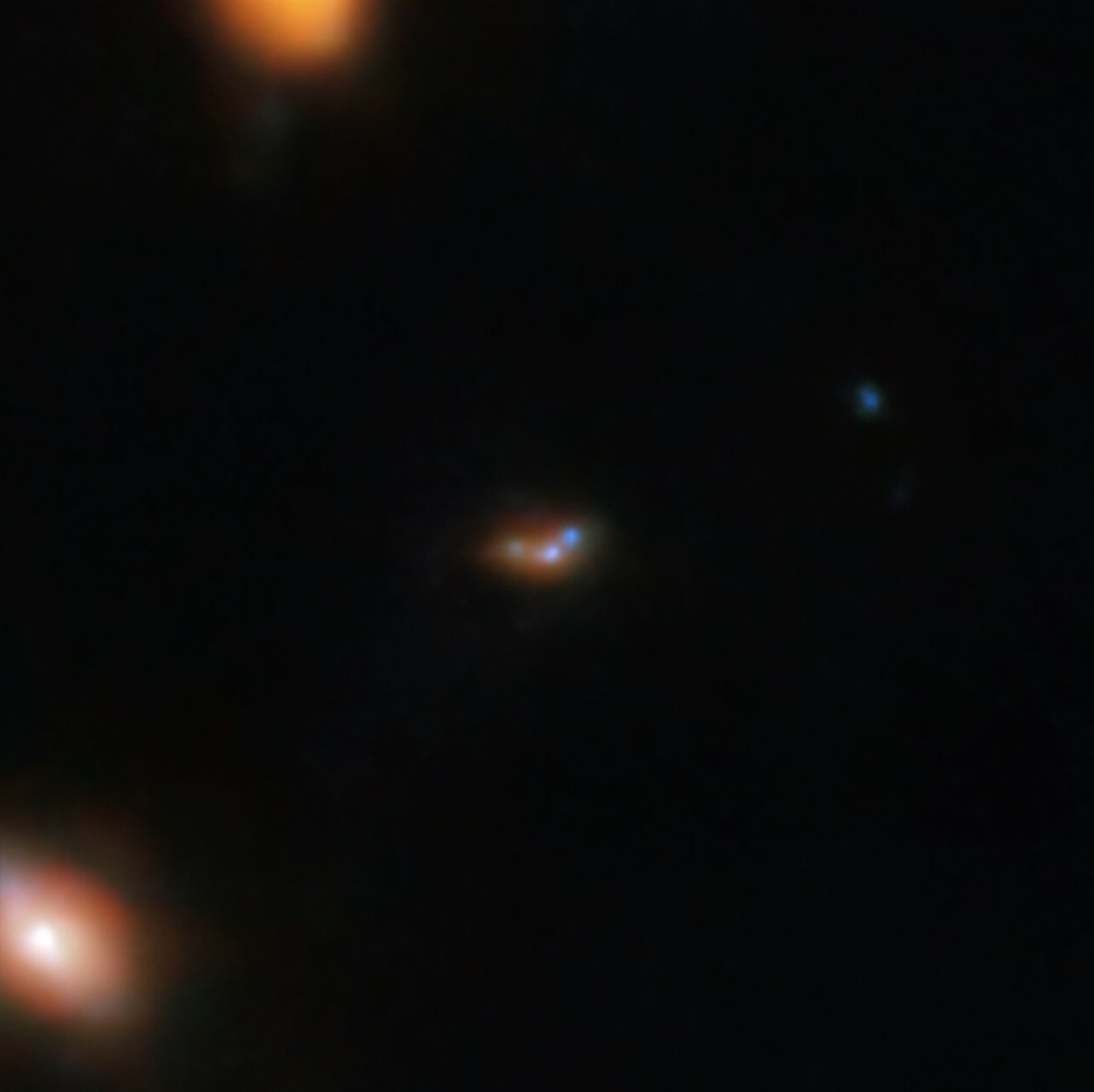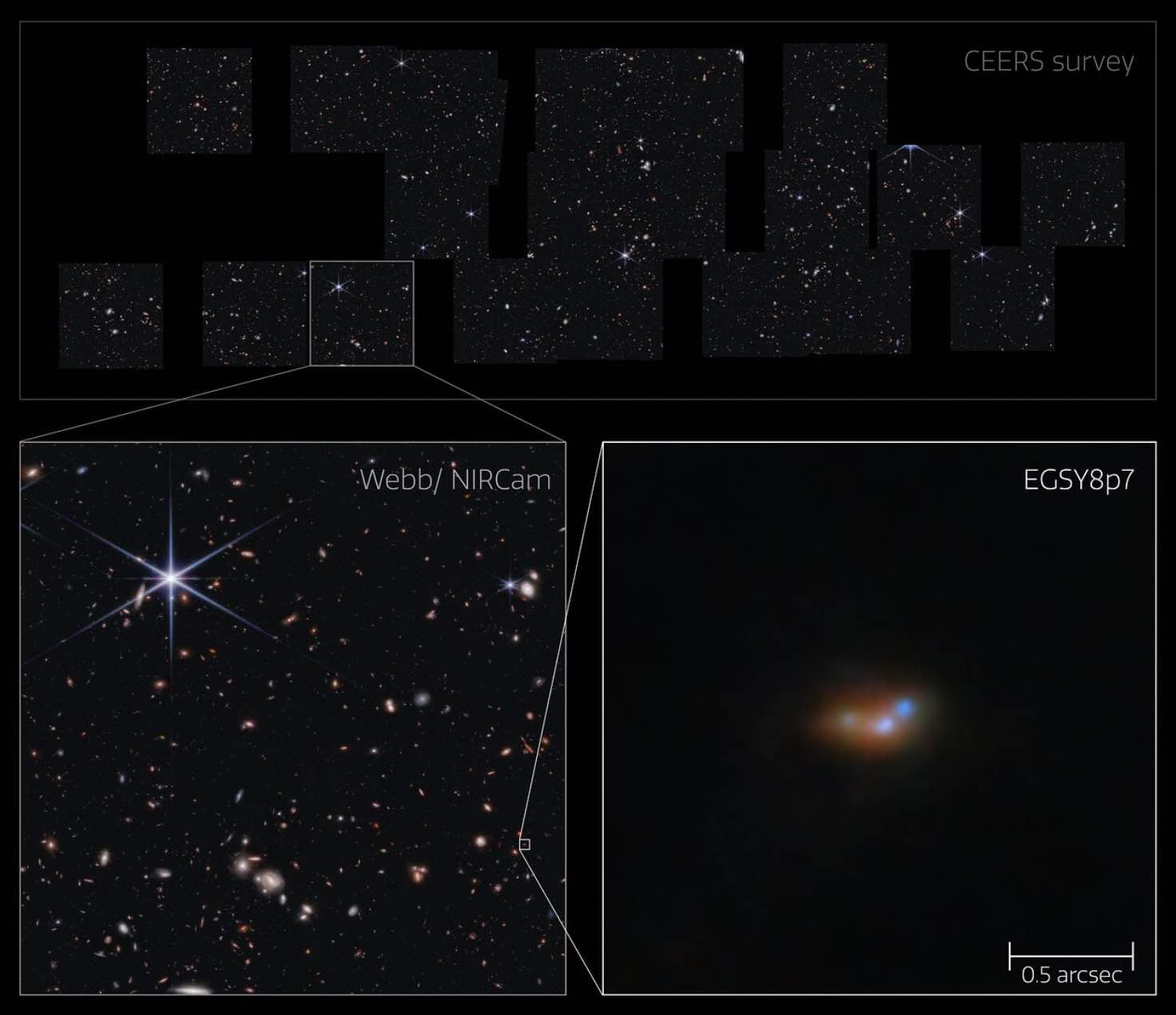One of astronomy’s most perplexing mysteries has been resolved, according to scientists involved with new findings made possible by NASA’s James Webb Space Telescope.
According to new findings, tiny faint objects have been located surrounding galaxies that, in the past, have displayed anomalous emissions of hydrogen, a discovery made possible by Webb’s powerful NIRCam instrument.
Astronomers have long wondered why light from hydrogen atoms can be detected, given that they should be blocked from view by gas formed in the aftermath of the Big Bang.
The new findings reveal mergers between galaxies as the likely source of these mysterious hydrogen emissions.
When astronomers view extremely distant galaxies, they appear as they would have looked long ago due to the time it takes the light they produce to travel across space. Hence, observations made by the James Webb Space Telescope are not only revealing the most distant regions of the universe in unprecedented detail, but also how they looked in much earlier times.
However, these galaxies are very faint, and hence powerful telescopes are required to make the observations, a task that Webb is well equipped to accomplish.
Very active star formation occurred within the universe’s earliest galaxies, giving rise to their other name: stellar nurseries. These regions of space produced a specific variety of light emitted from hydrogen known as Lyman-α emission.
Essentially, Lyman-α emission is produced by hydrogen atoms when an electron falls from a higher energy level to the lowest one it can be in, which can be likened to the electron’s home base. This light has a very specific color spectra that can only be discerned with the help of special instruments, which can be likened to being a “fingerprint” for this kind of activity.
 NIRCam image of the Lyman-α emitting galaxy EGSY8p7 (Credit: NASA/ESA/Ceers survey)
NIRCam image of the Lyman-α emitting galaxy EGSY8p7 (Credit: NASA/ESA/Ceers survey)
Long ago, these stellar nurseries were enveloped in large amounts of neutral hydrogen gas, and the even the spaces between galaxies once contained far more gas than what is observed today. Light emissions produced by hydrogen are easily absorbed by this gas, causing astronomers to predict that the Lyman-α emission that populated these regions of the early Universe, despite their abundance, would effectively remain invisible to astronomers today.
Yet, mysteriously, some early hydrogen emissions have been successfully observed by astronomers, a phenomenon that has until recently remained unexplained. But how could hydrogen that should have been scattered throughout the universe by now, if not absorbed altogether, still be visible today?
University of Cambridge astronomer Callum Witten, who specializes in the study of galaxies and active galactic nuclei, calls this question “one of the most puzzling issues” astronomers have faced in trying to resolve this cosmic mystery.
“Many hypotheses have previously been suggested to explain the great escape of this ‘inexplicable’ emission,” Witten, the principal investigator on a new study that explores this phenomenon, said in a recent statement.
However, thanks to the power and precision of the James Webb Space Telescope, new insights appear to have shed light on this longstanding mystery.
With help from Webb’s Near-Infrared Camera (NIRCam), Witten and his colleagues were able to observe much smaller and dimmer galaxies clustered around the brighter ones from which mysterious hydrogen emissions were previously noted. However, these lesser galaxies are not static, but instead appear to be dynamically interacting and combining.
“Where Hubble was seeing only a large galaxy, Webb sees a cluster of smaller interacting galaxies,” said Sergio Martin-Alvarez, a team member from Stanford University involved with the study, who adds that Webb’s latest revelations have “had a huge impact on our understanding of the unexpected hydrogen emission from some of the first galaxies.”
 NIRCam image depicting Lyman-α emitting galaxy EGSY8p7 in the CEERS survey field (Credit: NASA/ESA/CEERS survey).
NIRCam image depicting Lyman-α emitting galaxy EGSY8p7 in the CEERS survey field (Credit: NASA/ESA/CEERS survey).
Using state-of-the-art simulations, the team then explored the physics behind what they observed, learning that the fast accumulation of stellar mass that results from galaxy mergers had likely driven the strong hydrogen emissions being observed. Based on the new observations, this appeared to have occurred through channels that had been cleared of neutral gasses that had originally been prevalent.
The team believes that the merging of these smaller, previously unobserved galaxies is very likely to be the solution to the lasting riddle of inexplicable early hydrogen emissions, and now aims to follow up their recent observations by looking at galaxies in other stages of merging, which they believe will not only help them to better understand how hydrogen emission is ejected, but also to reveal new clues to the evolution of galaxies.
The team’s research was the subject of a new paper, “Deciphering Lyman-α emission deep into the epoch of reionization, that was recently published in the journal Nature Astronomy.